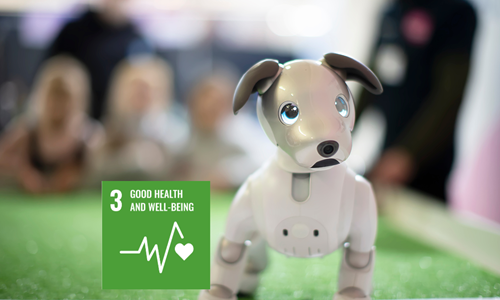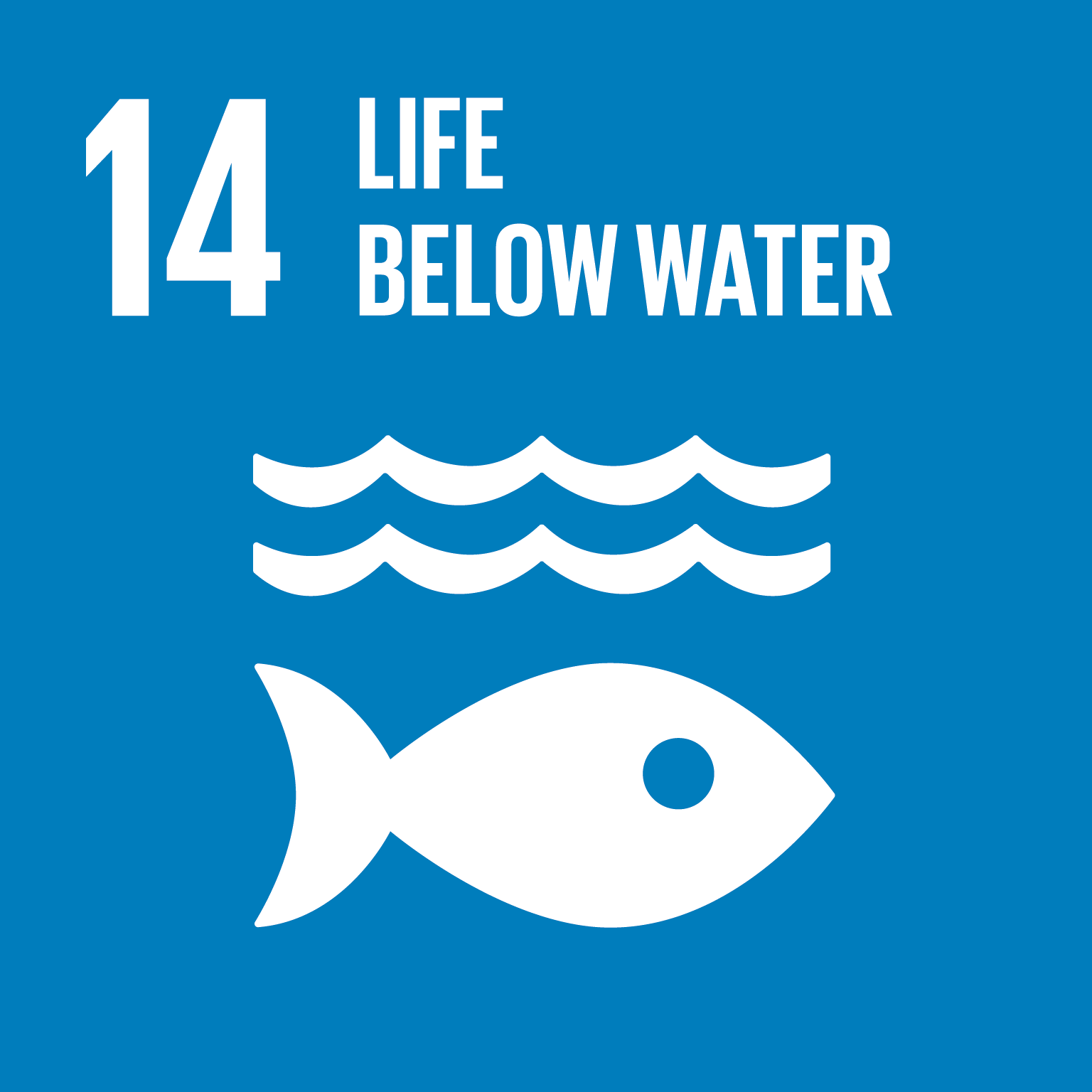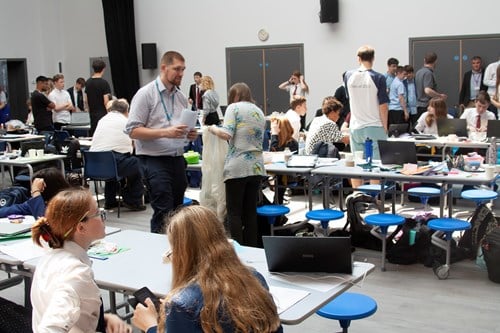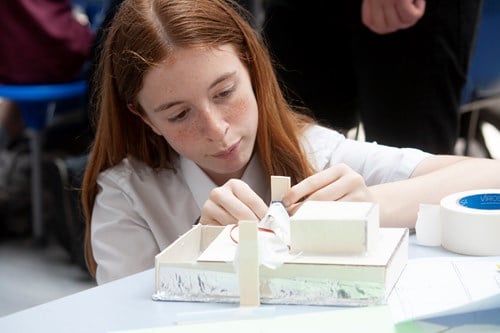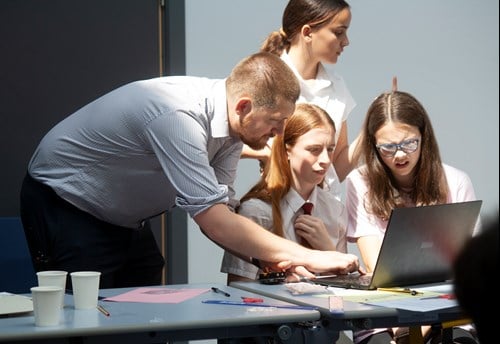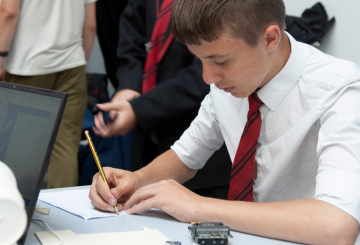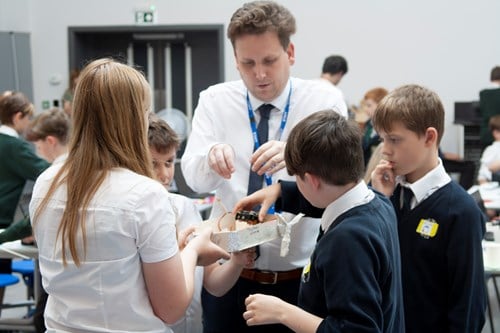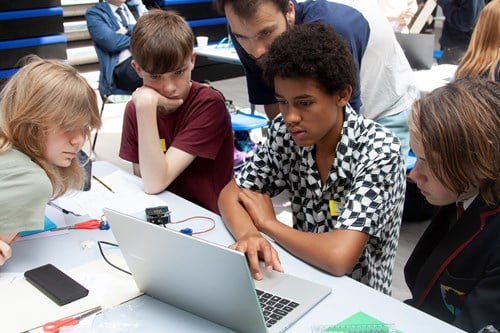Physical Computing Innovation Days
Innovation Days are exciting project-based learning experiences where students participate in teams to solve real-world challenges. We’re delighted to collaborate with the Arm School Program, where the concept was initially developed, to support members of the Physical Computing Thematic Community to run their own Innovation Days.
Physical Computing Thematic Community
Watch the video below for an introduction from a recent Innovation Day, where learners combined Teamwork, Creativity and Subject Knowledge to tackle real world problems.
Innovation Day resources
The supporting resources for Innovation Days are designed around the Arm Education Project Based Learning schema, combining technology, subject knowledge, context, practice, theory and pedagogy.
There are a number of ways to organise an Innovation Day. You may want to consider:
Timing of the event
This could be:
- an off-timetable enrichment day
- an after-school enrichment activity over a series of sessions
The support needed
The event could offer
- an opportunity to involve other school staff (including design and technology, science, maths), carers / parents, STEM ambassadors, or local industry representatives
- an opportunity for digital leaders from older year groups to support and mentor younger learners
The participants
The event could be:
- enrichment for a whole year group
- an opportunity to host teams from local schools
What is the format of a Physical Computing Innovation Day?
Teams of 3 or 4 learners meet at the beginning of the day. The venue could be a large school hall. Having more space and involving lots of teams makes for a brilliant buzz throughout the day – so more is more when it comes to number of participants!
Here are the main components of the innovation day:
The day begins with a ten-minute presentation from the organising teacher, which is supported by a briefing sheet. All students are given:
a clear understanding of the problem
success criteria which they must work towards as a team
At the end of the day each team will make a short product pitch, where they market their design. They will also explain the design process, what they have learned, what went well, what they could have improved. Finally, they will do a live demo of their solution.
Each team is encouraged to think about roles in their team. How will the tasks be divided so that they work efficiently and fairly? For example, it’s important that each team member gets a chance to contribute to the programming of the physical computing device. There are lots of other tasks, though, including developing the branding, recording learning point and building with craft materials.
They also will begin to research the themes in the project scenario, beginning to gather their findings on a design sheet.
It’s then time to gather everyone’s attention and to tell them about the craft materials they have access to.
Each team now has everything they need to plan their solution.
Teams should be encouraged to use their time efficiently: using the team roles to work in parallel on aspects of the design.
They will begin to design their solutions, gathering their thoughts on a design sheet. <link> Teams should use the input-process-output model to guide their plans for the programming element of the design.
When a team is ready, they can move on to prototyping. It’s important to emphasize the iterative nature of design work – they may begin building to a plan, only to find that it doesn’t quite work, so they need to adjust their build or start again. They might discover unforeseen problems with their design at the point of testing.
Overcoming these challenges is a combination of teamwork and resilience, which are important aspects of real-world engineering.
Finally, all participating teams come together to test their solutions and provide a short presentation with reflections on what went well, what they would do differently next time and how they worked as a team to solve problems.
The Arm School Program has designed the following real-world problems, which each come with all the guidance you need to run an Innovation Day. Each has been inspired by a UN Sustainable Development Goal. The supporting resources have been updated in collaboration with Computing At School. You could use these resources to run your own Innovation Day. Or you develop your own and share them with the CAS Physical Computing Working Group.
"The Innovation Day was a great experience for our students who were engaged throughout the whole day. They worked together as a team and enjoyed the freedom to express themselves in this extra-curricular approach to Computing"
Innovation Day resources
These resources provide all you need to get started.
The Arm School Program (ASP) has created these resources in collaboration with Computing At School from original ASP content. By using this material, you agree to this End User Licence Agreement.
https://school.arm.com



